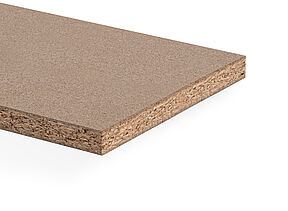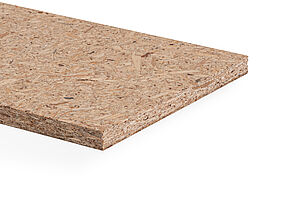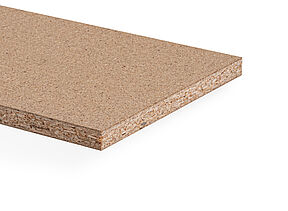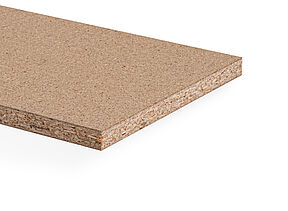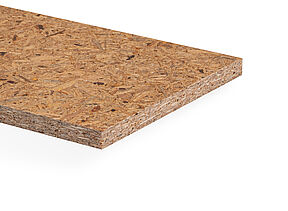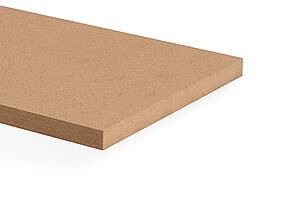Definition: What does timber construction methods mean?
Timber construction methods are those where timber is used as the primary building material to create structures such as residential buildings, bridges, and even in high-rise applications. Timber structures range from simple frame structures to complex supporting frameworks and are found in both modern architecture and traditional building methods.
Timber components are used as both load-bearing and non-load-bearing elements. When applying specific timber construction methods, various forms of timber are used, from solid timber to boards, fibreboards, or particleboard, to decorative panels. Through modern treatment methods, timber can be processed into high-tech building products that are effectively protected against fire, pests, and moisture.
Comparison of Timber Construction Methods: What types of timber construction are there?
Timber construction methods have continuously evolved in terms of ecological benefits, aesthetic flexibility, and technical innovations, so that today there are many different types of timber construction. These are distinguished by the materials and techniques used, each offering its own advantages and applications.
Timber construction systems can essentially be divided into solid timber construction methods and lightweight timber construction methods. Below, are the most important types of timber construction in both main categories.
Solid Timber Construction Methods
As the name suggests, solid timber construction uses timber components that are left in their (nearly) original thickness and strength. Solid timber construction is characterised by high load-bearing capacity, natural beauty of the material, and good thermal insulation properties.
Log Construction
Log construction is a traditional timber construction method where complete round timber logs or hewn beams are stacked on top of each other and joined at the corners using special connection techniques such as dovetail joints. This timber construction is typical for rustic or traditional buildings such as log cabins.
Unlike other solid timber construction methods, log construction uses larger, often round timber pieces and focuses on the visible beauty of the natural material. Compared to post and beam or cross-laminated timber constructions, insulation is often an additional challenge as the massive timber elements themselves form the main structure.


Post and Beam Construction
Post and beam construction is a method in which solid, layered timber boards lay next to one other. They are joined by nailing, dowelling or glueing to create large-scale building elements. These elements can be used as walls, ceilings or even floors.
In post and beam construction, the boards are arranged parallel to each other rather than crosswise. This leads to lower dimensional stability compared to cross-laminated timber construction.
Cross-Laminated Timber Construction
Cross-laminated Timber (CLT) represents the most modern solid timber construction method. It consists of multi-layered solid timber panels in which the timber board layers are stacked crosswise and glued together. This arrangement improves structural stability, making cross-laminated timber construction particularly popular for load-bearing walls and ceilings in multi-storey buildings.
Unlike post and beam construction and log construction, the crosswise glueing of timber layers in cross-laminated timber provides higher strength and stiffness, enabling its use in more complex and taller building structures.

Lightweight Timber Construction Methods
Lightweight timber construction is characterised by the use of thin, precisely dimensioned timber elements and panel materials that together form a light but stable skeleton. The gaps are often filled with insulation material, enabling high energy efficiency. Lightweight timber construction is particularly applied in house building and smaller commercial buildings, as it is a fast, cost-effective and environmentally friendly timber construction method.

Stud construction
Stud construction uses vertical timber studs as the load-bearing structure placed at regular intervals to form walls. These studs are connected with horizontal plates that absorb and distribute the load.
Compared to post and beam construction and timber frame construction, the focus in stud construction is on the continuous vertical structure formed by the building-high studs.
Post Construction
Post construction – better known as half-timbered construction - is a traditional timber structure named after the upper horizontal beams (posts). The posts rest on the vertical posts or studs and run through the entire building. They are stabilised by diagonal braces, forming the main load-bearing structure.
Unlike stud construction, which focuses on vertical elements, post construction emphasises the horizontal connection through beams.


Timber Frame Construction
Timber frame construction can be seen as a modern successor to the half-timbered or framed construction method. Each wall consists of a surrounding frame made of timber beams with bracing. This frame is filled with insulation material and clad with particleboard, fibreboards, plywood or plasterboard. When assembled, the frame walls serve as a load-bearing skeleton for the building.
This type of timber construction is robust, durable, and can be used for various projects.
Panel Construction
Panel construction works similarly to timber frame construction but is more prefabricated. The wall and ceiling elements made of timber frames are manufactured in a factory and already filled with insulation materials, creating ready-to-build panels. These can be directly assembled on-site.
The use of prefabricated timber panels allows for quick on-site assembly and less weather dependency during the construction phase. Panel construction is typically used for prefabricated houses.


Modular Timber Construction
Modular timber construction method features an even higher degree of prefabrication. Here, complete room modules consisting of timber components, insulation material, and even windows are manufactured and then transported to the construction site and assembled. This reduces assembly time on site and construction waste.
Modular timber construction method can include elements of timber frame and panel construction but is overall modular in design.
Hybrid Construction
Hybrid construction combines timber with other building materials such as steel or concrete to utilise the advantages of different materials, such as the thermal insulation of timber and the load-bearing capacity of concrete.
Unlike pure timber construction methods that use only timber, this type of timber construction integrates other materials, resulting in improved performance and more versatile applications.

Discover solutions for timber construction with Pfleiderer products
Advantages and Disadvantages of Timber Construction
What are the arguments in favour of timber construction methods? What are their limitations? In the following section, we will examine the advantages and disadvantages of timber construction to provide a comprehensive picture of their possible applications in modern construction practice.
Advantages of Timber Construction
Let’s start with the advantages of timber construction, which apply to varying degrees depending on the type of timber construction.
Sustainability
The most important argument for timber construction methods is sustainability – in an industry like the construction sector, which is responsible for around 25% of the UK's greenhouse gas emissions, timber offers new perspectives. Timber is:
- a renewable raw material.
- CO2-neutral as it stores carbon dioxide.
- recyclable and easy to reuse.
Furthermore, prefabricated timber construction components can reduce construction waste as material and energy consumption can be optimised in the factory.
Construction Speed
Timber construction systemsdo not need to dry out like masonry and can therefore be completed more quickly.
Especially timber construction methods with prefabrication impress with short construction times. What can be prefabricated in the factory is not weather-independent and saves valuable time and costs during on-site assembly.
Aesthetics and Flexibility
Another advantage of timber structures is their aesthetics and adaptability. With timber materials, you can realise various designs and architectural styles, from traditional to highly modern buildings. Timber is also often used due to its natural and warm aesthetic appeal.
Living Environment
The advantages of timber construction also apply to the management of a building. Timber has natural insulating properties that contribute to improved energy efficiency of the building and lower heating and cooling costs. Timber also has the ability to regulate moisture, leading to a pleasant and healthy indoor climate. Therefore, timber is often associated with improved air quality and a high level of a healthy living environment.
Disadvantages of Timber Construction
Technical innovations and developments in recent decades have helped eliminate many of the disadvantages of timber construction, making timber an increasingly popular building material. As with the advantages, the disadvantages of timber construction vary depending on the type of timber construction.
Fire Protection
Timber is a combustible material, which means it is more susceptible to fire than non-combustible materials like concrete or steel. At least, that’s the common misconception. However, houses in timber construction meet the same fire protection requirements as masonry buildings. For load-bearing elements, thick, solid timbers are selected, which are very resilient and additionally clad with non-combustible plasterboard to reduce the fire hazard.
Conclusion: There is no greater fire hazard in timber-built houses than in buildings made of other materials, as compliance with strict fire protection requirements and the use of resistant, protected timber elements guarantee a high level of safety.
Pests
Pests and fungi are an issue that affects old timber houses. In new buildings, pests no longer play a role as the timber is technically dried before use and therefore does not provide a breeding ground for pests. Additionally, structural measures are taken to prevent insect infestations.
By the way: Technical drying also prevents mould formation – entirely without chemicals. This sets the course for a long lifespan and a multi-generational living future.
Construction Costs
Although timber as a raw material is often cost-effective, the total costs for buildings in timber construction can be higher. Important for comparison with solid houses is the construction standard. For the same quality and size, the construction costs for timber houses are identical. Moreover, you should include other factors in your calculation, such as construction time, energy efficiency, ecological balance, and living health. In addition, current construction prices for timber have fallen, while cement, steel, and concrete are becoming more expensive due to high energy costs.
Sound Insulation
Under certain circumstances, timber buildings can offer poorer sound insulation than buildings made of more solid materials. This can be particularly problematic in multi-family houses or buildings in noisy environments. However, with an appropriately multi-layered ceiling and wall structure, suitable cladding, and cavity insulation, sound insulation can be ensured.
The Rise of Timber Construction Methods
In recent years, the advantages of timber construction have increasingly outweighed the disadvantages. This is evident from the current trend: the number of approved residential buildings in timber construction has seen significant growth. Timber construction types are particularly on the rise in residential and commercial sectors, reflecting a broader increase in construction activity across the UK.
The advantages of timber as a resource-efficient building material that binds CO2, offers good thermal insulation, and impresses with short construction times, convince both private and public builders alike
The Most Important Questions about Timber Construction Methods
Find out about the most important questions surrounding timber construction systems.
Is fire protection guaranteed in house building with timber construction methods?
Yes, fire protection is also guaranteed in timber house construction. Modern timber structures are made of fire-resistant materials and use special techniques to increase fire safety, and of course, comply with strict building regulations on fire protection. Among other things, non-combustible board materials, such as plasterboard fire protection boards or gypsum fibre boards, are used to protect the timber from ignition and limit the spread of fires.
How high are the construction costs when using timber construction methods?
Building costs in timber construction can vary but often fall in the mid to higher range compared to conventional construction methods. In addition to the pure construction costs, also consider long-term factors such as energy efficiency, sustainability, and the quick construction process.
Generally, buildings in solid timber construction are more expensive than those in lightweight timber construction. Material quality, types of timber construction, local timber prices, and specialised labour are additional factors influencing costs.
Are timber construction methods environmentally friendly?
Timber construction methods are generally environmentally beneficial as timber is a renewable resource that binds CO2. This results in a significantly lower primary energy demand in timber house construction compared to solid construction methods. Sustainability, however, also depends on responsible forestry practices.
How are houses in timber construction insulated?
Timber houses are insulated either with natural or synthetic insulation materials placed between the timber structures. Popular materials for thermal insulation include:
- Mineral wool,
- Glass wool,
- Rock wool,
- Timber fibre blown-in insulation,
- Timber fibreboard,
- Cellulose fibres or
- High-performance foam boards.
How long do timber houses last?
Timber house constructions can last as long as houses made of other materials with proper construction execution and protection against moisture and pests. The lifespan can span several centuries, as many historical timber buildings prove.
How are the interior walls of timber structures clad?
When using timber construction methods to build interior walls, these are often clad with plasterboard and wood-based materials mounted on the timber frame. This allows easy installation of electrical systems and provides a smooth surface for paint, wallpaper, or tiles. Alternatively, timber cladding can be used for a natural appearance.
Implementing Timber in Construction Methods with Pfleiderer Materials
The technical challenges that spoke against timber construction methods in the mid-twentieth century have now turned into advantages thanks to technological advancements: whether it’s thermal insulation, fire protection, sound insulation, or mould – there are sophisticated solutions for this, making timber construction an attractive construction method. Pfleiderer is also involved in developing innovative materials for greater sustainability and healthy living environment in timber construction.
Discover the structural possibilities for interior walls, ceilings, roofs, façades, and exterior walls, and develop sustainable and durable home designs.

